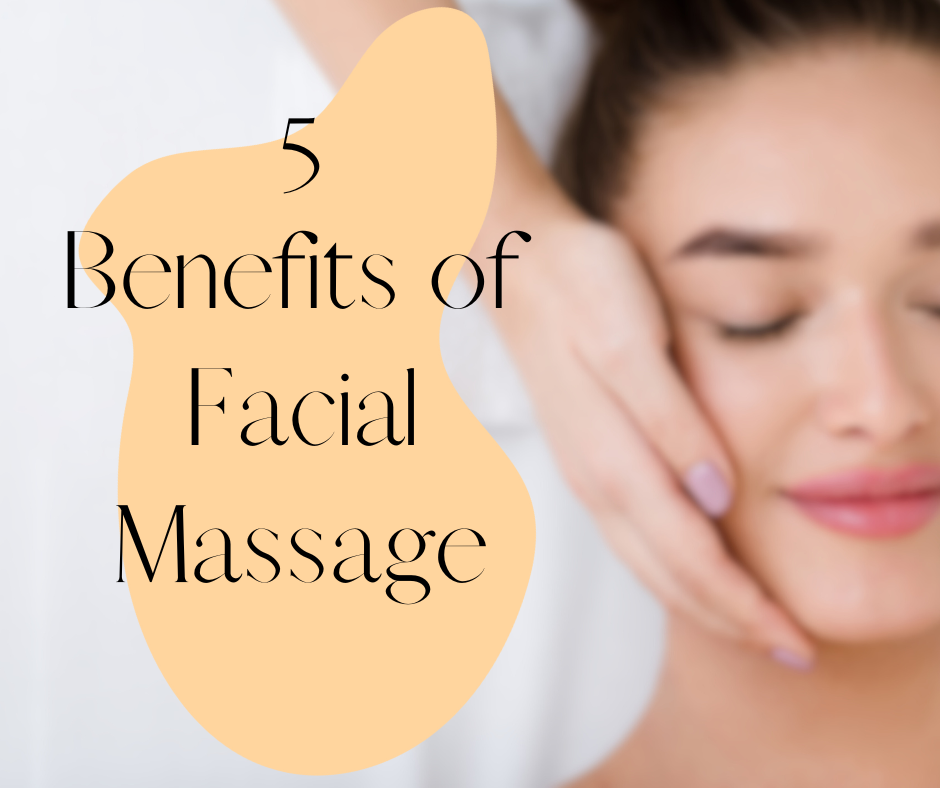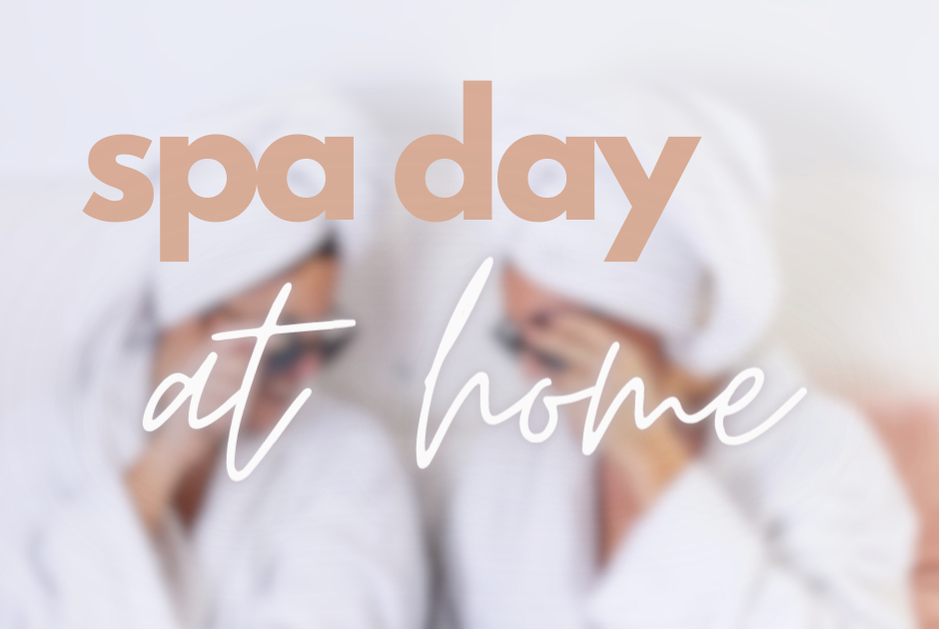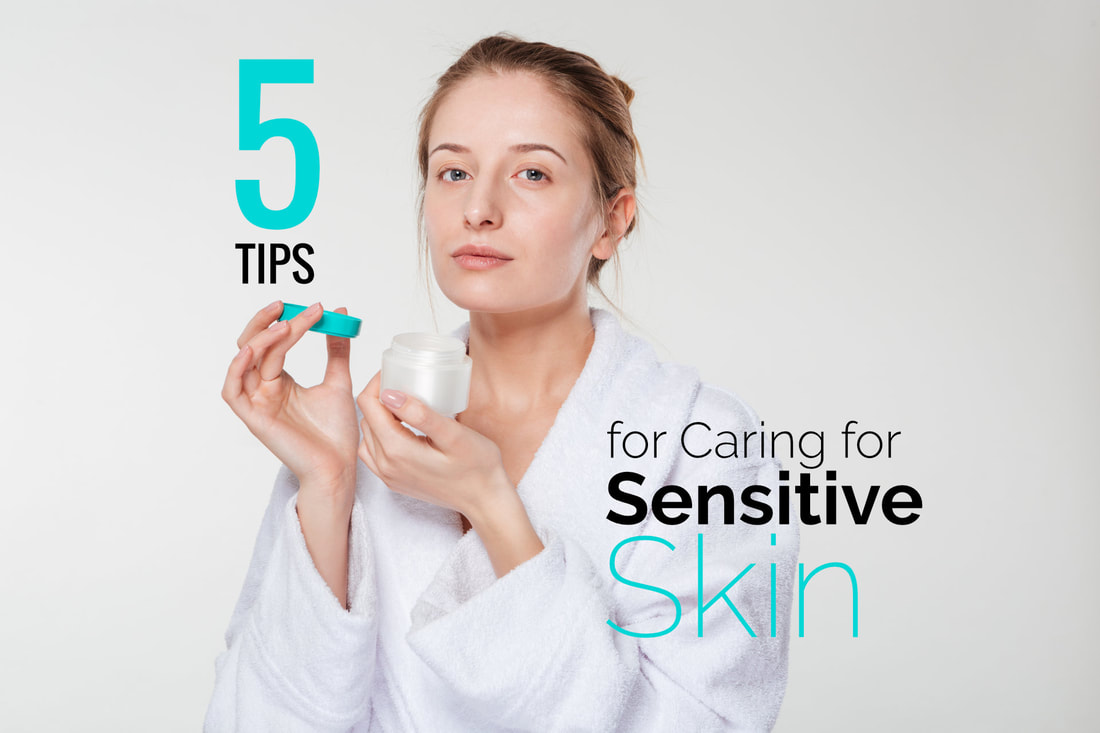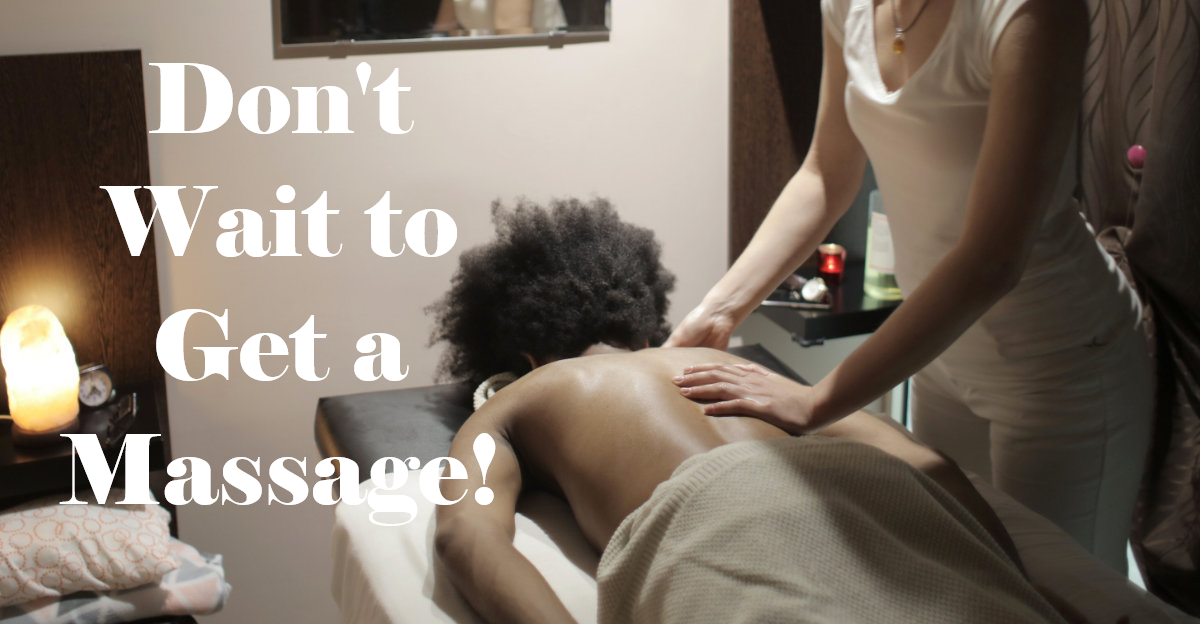|
Everyone knows that a full body massage has amazing effects on your mind and body - but what about a facial massage? Is it just a relaxing part of every facial treatment, or does a facial massage have benefits all of its own?
Massage gives your facial muscles a workout You know that your body needs to be regularly exercised to keep the muscles supple, but what about your facial muscles? Yes, they also need a fitness regime, and no, opening your mouth to add food doesn’t count as a workout. Regular exercise in the form of a facial massage will help tone those muscles and keep your face looking younger for longer. Any kind of massage helps to relieve tension If you’re feeling stressed, the muscles on your face can tense up in the same way as your shoulders hunch and your neck aches. On top of the stress, this can also lead to wrinkles, so you need to counteract it before the tension takes hold and starts to show on your face. Regular massage relieves the build-up of tension in facial muscles. You can aim for 10-15 minutes of facial massage to help relax tension and ease stress! It increases circulation When you’ve hurt your back or shoulder, a massage is an ideal way to get the blood circulation going promote healing too. The same applies to a facial massage. Your face muscles need looking after and will appreciate a decent massage even if you haven’t overdone it in the same way you might do with your sore calf muscles or shoulders. Having a good massage on your face will help to increase the blood and oxygen flow to skin and muscles, plumping everything up and giving you a younger, more radiant glow. It gives you a natural facelift Massage increases the blood flow and oxygen to the area, rejuvenating your whole face. It follows that having regular facial massages can naturally (and very pleasurably) give you a younger looking face. Oxygen is known to be a natural form of anti-aging skin care, and better blood flow has the effect of also increasing collagen production, giving you a naturally healthy glow. It will help your skincare products sink into your skin When you spend money on good quality skincare treatments, it’s always good to know that they are having an effect. You can increase the effects of your home skincare preparations too, with a little help from a good massage. Facial massage has many benefits like increasing circulation, natural lifting the face, and improving your overall appearance. On top of the benefits, it can also ease stress and promote relaxation.
2 Comments
There's nothing like going to the spa and getting a full day of pampering. But if you can’t get to the spa, we need to bring the spa to you!
Not all spa treatments can be done at home, but some treatments are easier to manage at a home spa party. You'll want to think ahead about the perfect spa night in for you and your group. Start planning out services you can do at home like facials, hand and foot massages, pedicures, or manicures. Picking the Theme Are you celebrating an event like a birthday, a bachelorette party or something special? In that case you’ll want to pamper the lucky party host and spoil her with treatments that make her feel special. (I’m using ‘her’ but all the above can of course be applied to him too). Baby showers and weddings are an ideal opportunity to add a little spa action to the party. Make sure when planning spa parties for baby showers you include safe options for pregnant women. Check out lists of safe essential oils for pregnancy as well as contraindications when giving massages or other spa treatments. Setting the Mood Sometimes we just feel like spoiling ourselves without a reason and this is the perfect opportunity to do so. To set the scene for a spa party, you’ll need to get the atmosphere serene and calm. Aromatherapy burners are a must, with a nice soothing premixed blend. Use a diffuser or a burner, whatever you prefer, and keep it topped up with delicious scents. Serve healthy snacks – fruit platters, crudités and hummus and smoothies or you can up the decadence level and add some sophisticated cocktails (and mocktails). There are plenty of recipes online or just stick to tried and tested Bellini’s – make it something easy to mix so that you don’t spend ages on your relaxing night working out how to fix a drink. Lastly – music. You might not be in the mood for whale music or pan pipes, but you need some mellow tunes to fix the spa mood. Find some nice chilled out tracks, you can make a playlist of your favorites. Now all you need is the guests! Sensitive skin is caused by irritation in the nerve endings in the top layer of your skin and happens because its natural barrier function has been weakened for one reason or another.
Some of the things that are known to trigger sensitivity include:
A recent European study found that up to 52% of people surveyed reported that they had a skin sensitivity of some kind. This can be anything from an occasional flare up to the kind of extreme sensitivity that can make life (and skin care) difficult. An everyday sensitive skin can leave you with dry, flaky patches, itchiness and discomfort, blemishes and redness, and this can be serious enough to affect your confidence and self esteem. Sensitive skin:
Tips for looking after your sensitive skin: To keep sensitive skin happy, you need to treat it carefully. 1. Treat your skin kindly Always look for products that are gentle and designed to not irritate your skin. Avoid higher concentrations of strong ingredients like niacinamide, retinol, vitamin C, BHA (salicylic acid), or AHA (glycolic or lactic acid). If you have sensitive skin, always read the label before using a new product. 2. Stay moisturized Moisturizing is even more important for you if you have sensitive skin. Ask your esthetician for advice, or as a general rule, opt for a gentle, long-lasting moisturizer that’s designed to keep sensitive skin hydrated throughout the day. Make sure that it doesn’t contain any irritating ingredients or ingredients that you know will cause your skin to react. 3. Keep it simple Most dermatologists recommend a simple three-step regime for sensitive skin: Cleanse, Moisturize, Protect. Don’t get stressed about the latest 10-step skincare menus and multi-tasking products; with sensitive skin less is more. 4. Always stay protected Keep your skin protected at all times, from sun and environmental damage. Wear gloves to protect your hand when you are doing the laundry and household tasks. Always wear a sun screen suitable for sensitive skin and use extra hydration when you expose your skin to harsh weather and temperatures. 5. Stay away from the perfumed products Don’t use perfumed products. Research has shown that fragranced beauty and skincare products are one of the most common causes of negative skin reactions, so while the unscented skincare products may seem a little dull, you know that your skin will thank you for using them. If in doubt – ask your esthetician for advice on the perfect products and treatments for your sensitive skin. The holidays are upon us again and although we all love this time of year, sometimes the pressure we put ourselves under to have the ‘perfect’ celebrations can cause so much stress and anxiety that we wonder if it’s all really worth it!
It’s no surprise that according to the American Psychological Association, women are most at risk from holiday stress. No matter how equal the sexes claim to be, it’s still the case that women tend to take charge of most of the organization of holiday arrangements, whether it’s planning, buying and preparing food, decorating the home, buying the gifts or just organizing who goes where. Women also find it harder to relax once the holidays are here and often deal with the build-up of stress (and any family tensions that happen over the holiday periods) by over eating and other not so healthy coping mechanisms. Holiday Pressures Although it’s true that most of us claim to look forward to the celebrations at this time of year, we can also get stressed out about them. Men and women both feel under pressure to make the holidays ‘perfect’ for their families, which can lead to arguments and stress. There’s pressure to attend work parties, see friends and not leave anyone out. Money worries add to the mix –celebrating isn’t always cheap – and people also admit that they can’t always switch off from the workplace when they are enjoying festivities, finding themselves stressing about tasks they’ve left behind. Some of us are just working way too hard to enjoy the holidays – 31% of people admitted that they were stressed because they couldn’t get enough time off from the day job to properly enjoy themselves. So – with all this stress build up, you need an escape valve! How to Beat Holiday Stress Don’t resort to comfort eating to relieve feelings of anxiety or stress. It feels good at the time and it’s so hard to resist with all the delicious food and invitations to parties that inevitably come up at this time of year, but you’ll just feel sick and bloated if you overdo the candy or delicious party food. Eat whatever you like but try not to eat when you’re feeling tense because being stressed actually affects your digestion and can lead to you feeling even worse. Take some time out for yourself if you feel the pressure of organizing (and paying for) everything start to creep up on you. Just because it’s Thanksgiving, or Christmas, it doesn’t mean you have to spend the whole time dealing with the needs of the rest of your family, friends or workplace. You can’t give anything if your own well is empty so treat yourself to a spa day instead; not only will a massage or facial make you feel relaxed and ready to face another round of gift shopping, but it stimulates feel good hormones, boosts your circulation and can even help boost your immune system which is an absolute must if you’re going to be socializing with friends, family and workmates more than usual. Doing something that’s just for you will help improve your mood so that you won’t find it so irritating when people make holiday-related demands on you at this time of year. You’ll feel much more able to deal with fighting kids, annoying relatives, and frustrations at work if you’ve had your fill of self-care before the holiday season kicks off. It’s your gift to yourself – and as they say in the commercials – you’re worth it! Are you the type of person who puts off getting a massage? Do you fall into the trap of thinking that because nothing actually hurts, you don’t need to worry about it? Many people think the same way, but you may end up wishing you had booked ahead of time instead of needing a last-minute appointment to address acute back pain or the flare-up of a chronic injury. Massage can provide relief if you do have an injury or are already in pain, but why wait until there’s something wrong before you take action? Massage can be part of your preventative therapy, a way to stop aches and pains from developing into anything more serious.
Keep On Keeping On... Most of us have to work on a daily basis, and looking after your back and your musculoskeletal system will save you and your employer a lot of stress and money in the future. It’s startling, but did you know that according to the Global Burden of Disease 2010, a staggering thirty-one million Americans say that they are dealing with the symptoms of low back pain at any one time, costing over $50 million dollars in conventional medical treatments, worker’s compensation, and absence from work? Why risk it when a study that was carried out in 2011 proved that having regular massages helped to relieve the pain before it got to the stage where it needed medication or required taking time off from work? Stress-Busting Massage Another cause of time off work is stress and/or anxiety, so you’ll be pleased to hear that a regular massage session can help you beat the build-up of stress and keep you feeling calmer for longer. It’s well known that many conditions are either brought on or made worse by stress. Making time for regular massage therapy helps to lower your body’s cortisol levels and increase the happy hormones serotonin and dopamine. It really puts you in a better mood. On top of this, it’s also thought that because a deep tissue or Swedish massage in particular helps to get your lymph fluid moving, this type of massage can also help boost your immunity. This means less coughs, colds and illnesses, which is all good! Beat the Pain of Inactivity Many of us can’t help it, but the average American sits still for eight or nine hours every single day. If your job means that you have no choice but to sit at a wheel or desk, it will pull your shoulders forward and cause them to become rounded. This has the effect of weakening your upper and lower back muscles, which is why you might be feeling that pain in your shoulders and back. If you are able to get up and about regularly to do some quick stretching or activity, and you pair this with a regular massage, your posture will thank you and you should reduce any pain you feel from sitting still for so long during working hours. Have we convinced you to make a massage part of your regular routine? Of course, it’s not all about preventing illness or relieving pain; receiving a massage is a therapeutic and beneficial therapy in itself, and many people book regular massage therapy sessions just because they know they will climb off the massage table with a smile on their face, feeling amazing! We are bombarded with messages all the time telling us that we need to relax – but at the same time, it seems as if we are also bombarded with reasons not to! The truth is that if you take care of your body and mind, it pays dividends and can help you to deal with some of the unwelcome things in life that give stress us out in the first place. The first things to tackle are getting your share of rest and relaxation. Here’s why:
Getting enough sleep, and good quality sleep at that, is absolutely essential for functioning optimally. Whether you’re working, learning or just living, sleep is key. Sleep is also vital for is essential for restoring your body’s energy, repairing muscles and promoting good appetite. Quality of sleep matters as much as the amount of shut eye you cram in. The more time you spend in the REM stage of sleep, the better, as REM (dream) sleep is the most restorative – ideally you should spend about 25% of time in this type of sleep (if you have a fitness tracker, the sleep tracking function can be a real eye opener). Lack of good sleep can lead to a higher risk of heart disease, diabetes, obesity, headaches and depression. Of course, sleep isn’t the only way to rest, relaxation while you’re awake is very important, too. You may have heard of the fight-or-flight response? Well, it has an opposite – the relaxation response. This happens naturally when your body no longer thinks it is in any perceived danger, and when the autonomic nervous system returns to normal after a stressful situation. The relaxation response is like an off switch, where the body moves from a stressed state (physiological arousal) to one of calm. You can bring this response on deliberately by using techniques that are designed to relax both body and mind. Some of the most effective ways to do this include: • Meditation • Breathing Exercises • Yoga • Massage therapy • Facials • Spa Treatments Making time to unwind and enjoy life is really important – and often undervalued. Relaxation has many physical benefits; it can decrease your blood pressure, help to relieve pain, and also improve your immune and cardiovascular systems. Did you know that a good belly laugh is one amazingly effective way to de-stress, too? Get the funny films out, a big laugh can potentially help your heart and lung health as well as promoting muscle relaxation. We all know that a good giggle can help our mental health too; as well as flooding our body with feel-good chemicals, it helps to reduce anxiety. If you aren’t getting enough time to relax, you may find yourself feeling tense and stressed out. Next time you feel the fight-or-flight feelings getting on top of you, or you notice tell-tale effects of stress like break outs or constant headaches, stop it in its track with a massage session, yoga class or some deep breathing exercises and feel that relaxation kick back in… If you’re a regular to massage, the concept of a muscle knot is probably something you’re well aware of, but what are they exactly? And what’s the relationship between a muscle knot and a trigger point? What’s a trigger point? Trigger points are simply tender spots on your body that ‘trigger’ or cause discomfort. These tender spots are common and many of us have them, but for some people they can become really troublesome. They are common in hot-spots like the shoulders and neck, but they can crop up just about anywhere and in some people, they can cause a lot of pain. A trigger point is like a ‘knot’ in your muscle or the fascia (the thin wrapping around each muscle), which is why they are often referred to as a muscle knot. To a massage therapist it feels like a hard contraction on the on the muscle fibers connected to it, like a tight band around the muscle. Trigger points in muscles are ‘myofascial trigger points’ – and there are other types of trigger point that can occur around the body, on your skin, ligaments and tendons, and on scar tissue. How can you tell if you have a muscle knot or trigger point? You’ll be able to tell where your own trigger points are; if you touch them with any kind of pressure you’ll notice they start to hurt, or hurt more. They are often situated close to problem areas for you as well. If you have back issues, your trigger points are likely to be around your back, neck and shoulders, although this isn’t always the case. The range of sensations you might feel from a trigger point can be quite wide, too; anything from intense pain to a dull, throbbing ache. Some people feel ‘pins and needles’ or numbness. What causes trigger points to flare up? One theory is that they are related to some sort of muscular overload - if you’ve been working out too hard or overdoing it, or just not been taking care of your posture. Muscle fibers, or portions of them can stay contracted or become inflamed. How are Trigger Points treated? If you notice a sore spot and want to see a massage therapist for advice, we’d advise having a word with your medical adviser first just to make sure that any swelling or soreness is just down to muscular stress and nothing more serious. Once you’ve been checked over, we can start to look at the problem and help you to heal it with massage. A good massage therapist will be able to work on your trigger points and muscle knots, gently but firmly helping them relax and release. They can also help you with in-between treatment massage techniques to try at home that will ease any discomfort and help to prevent the muscle knots building up again. Trigger points and tender spots can cause a huge amount of pain and discomfort, often restricting your movement and your ability to do the activities you want to. You don't have to put up with this pain though, with some action on your part you can be pain free! There’s no escaping the truth; winter is here. The days are shorter and the sweaters have come out of the wardrobe. It’s not unusual for people to get the ‘winter blues’ – which is a condition many people in the northern hemisphere are afflicted with due to lack of sunlight during the colder and darker winter months. The good news for everyone is that massage therapy can help increase health happiness for everyone during the cooler months of the year. Here a few reasons why…
Massage May Help to Banish Seasonal Affective Disorder As we’ve mentioned, Seasonal Affective Disorder – sometimes known as the winter blues – is a problem for many people when there’s less natural sunlight. This is because sunlight causes the brain to release a feel-good chemical called serotonin that improves our mood. When there’s less sunlight, less serotonin is produced, which can lead to low mood, lethargy and feeling like it's difficult to get out of bed in the morning. In some people it can even cause depression serious enough to warrant visiting a doctor. It’s not a happy place to be, but the good news is that booking regular massage can help to lift a low mood. A regular massage session will help to relax stressed minds and bodies, as well as releasing the serotonin and endorphins, the same chemicals produced by the body when you’re happy. It Can Give Your Circulation A Boost Massage therapy may also help boost circulation during a time of the year when nobody wants to get up and go outside for a run. Everybody knows that getting regular exercise helps keep circulation running smoothly, and also gets the oxygenated blood pumped around our bodies faster. A lack of movement in the winter months can result in feeling sluggish, and poor circulation can lead to lethargy, aches and pains. Here’s where a massage has extra benefits; it can help blood to pass through any congested areas and boosts overall flow, which also helps the lymphatic system to remove waste that builds up. At the same time, massage is well known to help decrease blood pressure. It May Help Your Body to Fight Off Minor Infections For anybody that’s prone to suffering from colds during the winter season, massage might be useful for prevention. It’s been found that massage sessions can help to boost the effectiveness of the immune system, helping to fight off the normal bugs and viruses that circulate this time of year. A gentle massage of the area around the lymph nodes also encourages white blood cells to circulate, and as massage increases blood flow it also stimulates the white blood cells to start fighting any infection in your body. These are just a few of the many benefits that massage therapy can bring during winter. Of course, there’s also the feel-good aspect of a warming hot stone massage, delicious aromatic massage oils, and even just the act of taking time out to look after yourself when you need it. We all know how important it is to choose the right skincare products. If you get your products right, they will leave your skin looking and feeling at its best. They can help to improve skin condition if you have acne, dry skin, and sensitivity or if your skin is starting to show signs of aging. There is such a wide choice of products on the market that it can be hard to decide which one to try. Here are a few tips we’ve put together to help you select the right skincare products for your needs.
What’s your skin type and what does it need? We recommend having a professional consultation to truly determine your actual skin type and pick up on any specific needs you might have overlooked. An esthetician will take a really close look at your skin and help you to decide what the priorities are for your skincare routine. She may tell you something about your skin that you don’t know - for example, even if you think your skin is just a bit dry, it could be because it’s sensitive too, and you just didn’t realize that you were using products that irritated it? Changing your products to a professional range that’s specially designed for your skin type could make all the difference. Why go professional? There are commercials everywhere for skincare products and they all promise beautiful skin. Some are cheap and available from drugstores anywhere but the professional ranges are more expensive and exclusive, so why would you opt for a professional product? Drug store and department store beauty products can be sold by anyone, because they normally contain lower levels of active ingredients. They are cheaper because they can be easily mass produced and have a very long shelf life. Buying from a salon, spa or esthetician means you get an extra level of recommendation – you’re not just buying from an advertising agency’s copy but you’ve got the benefit of the esthetician’s experience and training in helping you find a suitable product as well as a better quality product with better active ingredients. Estheticians carefully research their product lines, and are educated on ingredients, how to use the different products, and will educate you on how to best take care of your skin. What’s in a cosmeceutical? Cosmeceuticals, sold by licensed estheticians tend to contain higher concentrations of active ingredients – only medical grade products sold by doctors are legally allowed to contain more active ingredients. Professional skincare companies put a great deal of money into researching cosmeceuticals; they use hi-tech ingredients like peptides, enzymes, plant stem cells and vitamins. They also benefit from the most advanced latest delivery systems. If you want to do something fantastic for your skin – book a session with a professional esthetician to get to know your skin properly. You don’t always have to book a facial to get professional product recommendations, although this will give your esthetician a complete look at your skin. Most estheticians offer product consultations and can create a customized plan for your skin based on your concerns and their expertise.  Which Essential Oils Can You Use in Pregnancy? Many moms-to-be enjoy aromatherapy and want to carry on with it to help them ease the aches and pains or other symptoms of pregnancy. If you want to continue to use your aromatherapy routine, remember these general guidelines: 1. Just use one drop of oil at a time 2. Don’t overdo the same oils – mix them up. 3. Dilute the essential oil with at least a teaspoon (5ml) of base oil in a bath or if using it on your skin. 4. Some experts recommend waiting until the first trimester is over before you use aromatherapy. Oils That Are Safe As long as your pregnancy is going well, it's fine for you to use: - Chamomile - Lavender - Citrus oils, like Tangerine and Neroli - Frankincense - Peppermint - Ylang ylang - Eucalyptus - Bergamot - Geranium You Should Avoid - Nutmeg, which can react with pain-relieving drugs in labor. - Rosemary, can cause contractions. - Basil, some people think it could contribute to abnormal cell development. - Jasmine and Clary sage, can trigger contractions - Sage and Rose, may cause bleeding in your uterus As always, check with your doctor before starting the use of any medication, supplement, or topical agent during pregnancy. |
AuthorBella Terra Organic Spa and Shoppe in Evansville, Indiana. Sharing stories regarding healthy living, holistic wellness, and green beauty. Archives
September 2023
Categories
All
|










 RSS Feed
RSS Feed
